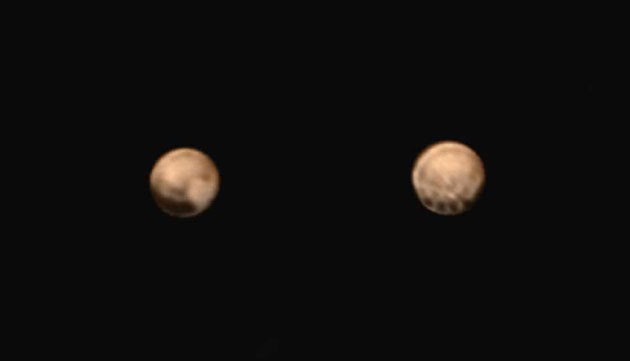New images of Pluto released by NASA's New Horizons mission promises a rare insight of the mysterious planet though what is intriguing scientists most right now are four dark spots lining the dwarf planet's equator.
Each of the four spots is about 300 miles in diameter and is equally spaced, of which the scientific community has no credible explanation at the moment. Everyone is hoping that to change past July 14 which is when the New Horizons spacecraft is set for its closest flyby of the planet.
However, no quick solution to the dark spot mystery is forthcoming right now as New Horizon will not be seeing the hemisphere containing the spots on July 14 though those sections will definitely be covered in the coming days. What is exciting for the scientists as well as space enthusiasts is that the New Horizons will be the first among man-made objects to travel this close to Pluto.
New Horizons will be just 12,500 Km above Pluto on July 14, precisely at 11.49 GMT but will be too busy performing a variety of other pre-programmed tasks to send back any images then. Apart from the planet itself, the probe will also be studying Pluto's two moons - Hydra and Nix, ABC News reported.
The New Horizons will also be on the lookout for clouds, which if present will allow the scientists to determine the speed and direction of wind on Pluto.
According to Engadget, the space probe is also designed to study the environment around Pluto by detecting ions in an attempt to shed more light into Pluto's escaping atmosphere and how quickly it is happening.
New Horizons had started its journey on January 2006 atop an Atlas V rocket. Nine years since, it has travelled around 5 billion kilometres to the farthest reaches of our solar system to study Pluto, a distance so huge that radio signals emitted by the probe will take 4.5 hours to reach ground stations on earth.



























